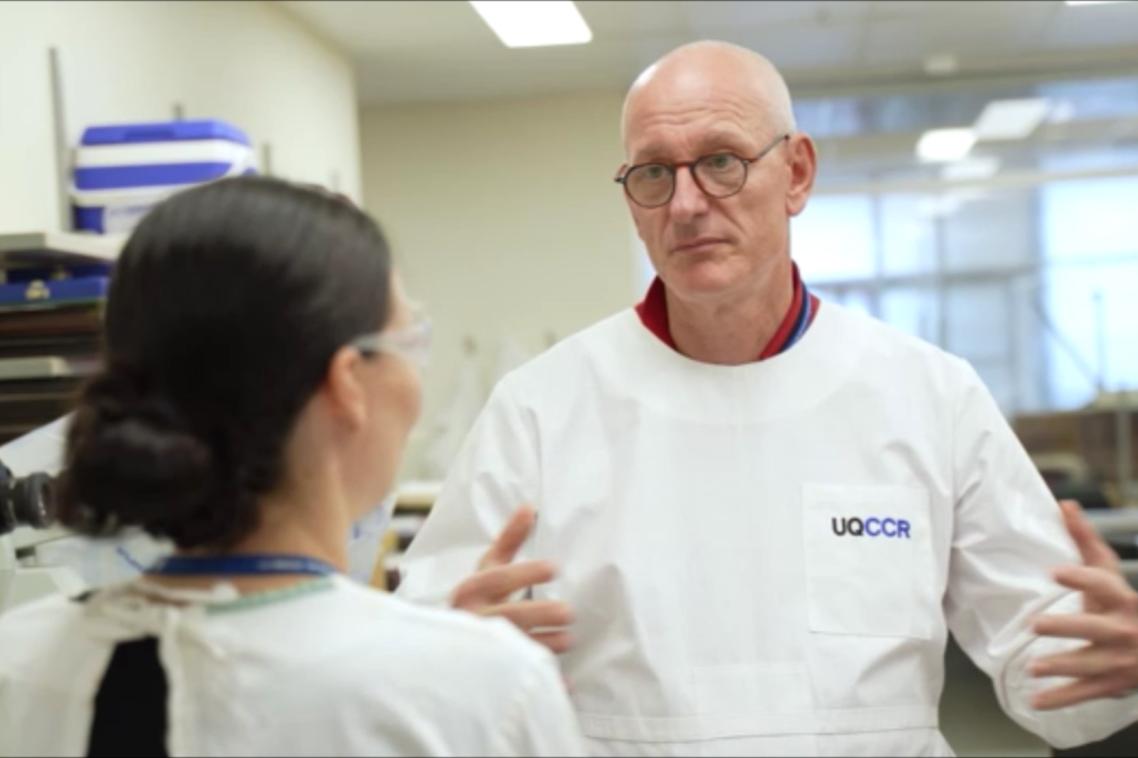UQ researchers help Queenslanders make shady places
University of Queensland Architecture Department researchers have developed the State's first shade guidelines for young children, public pools and sporting fields.
The researchers are also developing a training program to inform groups such as architects, builders, local government officers and community groups about effective shade creation.
Funded by a Queensland Health grant, the three guideline books, Shade for Sports Fields, Shade for Public Pools and Shade for Young Children, were published and launched between 1995 and 1997. Also funded by Queensland Health, the training program, based on the three books, is due for completion by the middle of the year.
Research for the books and the training program has been co-ordinated by Architecture Department head Michael Keniger and senior lecturer Brit Andresen.
Senior research assistants Laura Listopad and Rosemary Kennedy have researched and written the guidelines with Ms Listopad now undertaking Statewide surveys of people involved in shade creation projects for the development of the training program.
Ms Listopad said the aim of the books and the training program was to promote good shade design and planning principles to improve the quality and effectiveness of shade offered in public settings throughout Queensland. Despite Queensland having the world's highest rate of skin cancer, there had never before been such in-depth research into effective shade design, she said.
'It's estimated that almost two out of three Queenslanders will develop some form of skin cancer in their lifetime making effective shade creation at pools, child care centres and sporting grounds a great imperative,' she said.
'While personal protection from the sun such as wearing sunscreens and protective clothing is essential, shade provision helps to provide additional protection from the sun especially in situations where people may be exposed for long periods such as when watching a sporting match or when children play outdoors at child care centres.
'In the course of preparing the shade planning guidelines, we found few excellent examples of effective shade provision. We further found that much shade creation within community settings does not provide effective sun protection. An overhead canopy does not necessarily create a protective environment. Many other factors must be considered if shade is to provide maximum protection for its users, when and where it is most needed.
'Factors such as location, climate, time of day, vegetation, materials used and ultraviolet radiation sources (for example, direct or indirect such as reflected radiation) all impact on the effectiveness of the shade (whether it is built or naturally provided by vegetation).
'Shade needs to be planned with user activity needs and the overall nature of the place in mind. For example, some shade structures at swimming pools provide effective coverage at noon but not between 2pm and 4pm when children may be attending school swimming lessons.
'Another consideration is climate and comfort. For example, people may worry that a shade structure may make play areas too cold in cooler weather. However, with careful choice of materials and arrangement of structures, shaded areas may be created to respond to seasonal comfort needs. It is possible to create shady areas that are warm and sunlit yet restrict the presence of ultraviolet radiation.
'Shade structures and planting can also contribute to a setting's quality. Shade at a child care centre can be designed in a way that compliments play areas by making them attractive to children. For example, different materials can be used in the roof and at the sides to create visual and spatial variety in a play area by subtle patterns of light and shade.'
Ms Listopad said the guidelines and training program also addressed common misunderstandings about shade.
'Some people believe that shade which blocks sunlight over a pool may make the pool water unhealthy. However, in most instances the reverse is true. Shade reduces chlorine breakdown so that pool managers do not need to use as much chlorine to maintain the same health standards,' she said.
The books are available by contacting the Royal Australian Institute of Architects on telephone 07 3846 4900. For information about the training program, contact Ms Listopad on telephone 07 3365 3848.
For more information, contact Mr Keniger (telephone 07 3365 3843) or Ms Listopad (telephone 07 3365 3848).
Related articles

Beyond COP30 – harnessing momentum and opportunity

A meeting of the minds that could transform treatment
Media contact
UQ Communications
communications@uq.edu.au
+61 429 056 139
